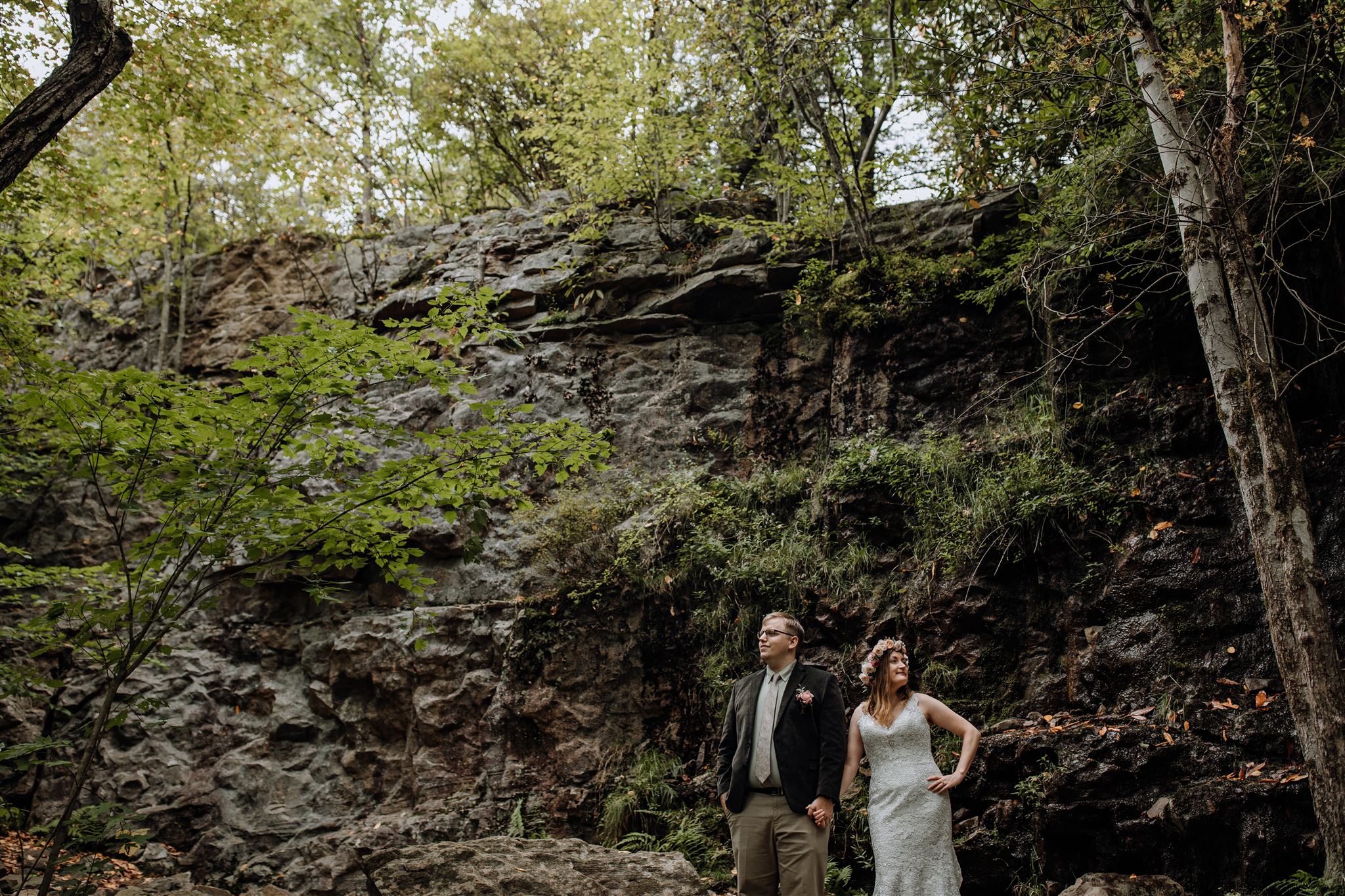Let us be clear from the outset – the goal of this post is to teach you (a photographer who is just beginning to learn how to transition from a hobbyist to a professional who gets paid to take pictures for people) how to get clients. If this is a topic that interests you, you will have a HUGE amount to learn here.
Last Updated: February 14th, 2020
We are a husband & wife photography team, and we’ve been “in the game” for over 3 years now. Over time, we ramped up our photography business from our initial (and super cheap) bookings to a fully booked (…we even say: “overbooked”) calendar with clients paying us enough to support ourselves and live how we want to live.
Whether your goal is to be a full time photographer or just make some extra cash as a side hustle, meeting these goals begins by getting clients in the door. But…how do you get someone to notice you and take you seriously as a photographer?
Start by having something unique to offer
Let’s have a quick reality check – everyone is a photographer.
You can take a casual scroll through Facebook and see how many of your friends are offering to shoot engagement photos, family pictures, and weddings. While many people are at it, very few of them take it seriously. Even fewer have the necessary business skills and patience to put themselves out there enough to get to a point where they can charge what they want for their service.
But, with so many photographers ranging from stay-at-home moms wanting to bring in a little side income to highly established pros that can charge thousands of dollars for a shoot, what are you bringing to the table that is different?
For many of us – this isn’t going to be an easy question to answer.
In practice, the #1 thing you bring to the table is YOU.
This was a wise piece of marketing advice shared recently in our interview with elopement photographer Courtney Lynn you can read here.
Aside from you, we also find uniqueness makes its way into our photography in small ways rather than really massive ones. It’s seen in how we handle our social media accounts, how we curate our portfolio, how we relay pricing information, and so on. Every small little difference between you and the other photographers out there helps build your case!
Answer this: Who do YOU want to work for?
 Many photographers we talk to that want to break into the industry are often interested in the world of portraits and, often enough, weddings. The reason for this is, probably, because it’s seen as “easier” to get into and make good money when compared with something like landscape photography.
Many photographers we talk to that want to break into the industry are often interested in the world of portraits and, often enough, weddings. The reason for this is, probably, because it’s seen as “easier” to get into and make good money when compared with something like landscape photography.
But – who (and what) do you want to photograph?
There are many questions that can be asked here, but ultimately identifying who your target audience is will be beneficial because you can gear your portfolio, marketing efforts, and so on to trying to attract that ideal client.
For us – we quickly decided that our primary audience would be couples. We want to take couples portraits, engagement pictures, and photograph weddings. We connected with this audience because we feel there is a lot of potential for artistic creativity, a lot of potential to make an impact on someone’s life by offering tangible memories of major events for them, and because we are a couple ourselves and have experienced the highs and lows that come with that.
Your ambition and ideal clients to work for in photography may be different than ours – so make sure you define for yourself who you want to work for (and who you don’t!).
Create a portfolio that matches your brand
This is the classic “which came first – the chicken or the egg? story!”
We all know and accept that in order to get clients who want to pay you for a photography service, they will want to see examples of your past work. These examples are your portfolio. But – how do you get examples of past work when you can’t even book your first client?
This is, honestly, one of the biggest challenges most photographers will face at the start of their career. In simple terms, it requires you to do a good deal of hustling for little pay.
Our earliest shoots were done for free. Some of them were also styled shoots – where we literally paid models to let us take pictures of them. In the wedding photography industry, we also did a good deal of second shooting – which meant we assisted another already established photographer on a wedding day for one of their clients.
The good news is – it takes very few of these opportunities to start piecing together a good portfolio if you are taking amazing photos in the process.
Our earliest “portfolio presence” consisted of one second shot wedding, an engagement shoot we did on the cheap, and some styled shoots. This was enough for our first clients to see work they liked and book with us.
Now what’s this about the “branded” portfolio? Ultimately – you want a portfolio that reflects your photography brand. You do not want to show off every single image you’ve taken – you want to curate and only show off the best of the best. And – your “best” images should be representative of your ideal client-base (or: the types of people you want to work for).
Start out cheap and raise your prices with experience
 Anyone who wants to get clients also wants to make money with their photography craft.
Anyone who wants to get clients also wants to make money with their photography craft.
For some reason, talking about money in the context of an art form can feel like a big no-no for many. In reality, we see a lot of photographers who talk about quickly starting a “6 figure photography business” and, on the other end, we see successful photographers skip out on talking about this really important thing for many people.
We’ll offer you a middle ground…
Money is not everything, but it is important for the majority of us to live the lives we want to live.
If you are currently working a day job, you might be viewing your photography skill as something that can be transferred into a way to get paid. You could be looking for beer money, a little extra cash to put in savings, or you are like us and want to be able to support your entire lifestyle comfortably by making photography a full time job.
When it comes to pricing your photography services, there are a few simple truths we’ve learned over the years:
- You will need to start off cheap to get your initial clients and experience
- You will need to raise your prices in response to demand for your service AND in response to how much you need to make for your particular lifestyle
The single most important thing that matters in your pricing is: how much money do you need to make to be happy with providing this service?
For some photographers out there who only want to make a quick buck on the side, they could charge $50 for a portrait shoot and be content. $50 bucks can buy you a couple pairs of pants, afford groceries for the week, fill up the car with gas, or allow you to get the newest video game that just came out.
For other photographers, they need to make more money from their services to sustain their lifestyles. We charge around 400$ for a portrait shoot, and average $4,000 for a wedding or event coverage.
However you approach your pricing, do it with your needs in mind, not necessarily what the “industry” dictates.
For more reading on the topic of pricing your photography services, check out these other articles we’ve written:
- Beginner’s Guide: How to Set Win-Win Photography Service Prices
- We Checked Out 50 Wedding Photographers to Find Out the Average Price – Here’s What We Found
- Real Talk: How Much Money Does It Take to Start a Photography Business?
Build a solid reputation
We like to define “reputation” like this…
Your reputation is how people perceive you as both a regular person AND a person providing a paid service before, during, and after getting in touch with you.
With this in mind – you need to be thinking about 3 key things:
- When they are just researching photographers – is the information they can find about you positive?
- When they talk with you on the phone, meet you in person, or work with you in some way – does it leave a positive response in their minds?
- And after they’ve met with you or worked with you – are they happy to have had this experience?
Building a good reputation requires that you can answer “YES!” to each of these questions.
The trouble with building a reputation is that it doesn’t always feel like a tangible thing. Trust us, this has been something that’s frustrated us at times – and in the early stages of pursuing offering a photography service, it will likely drive you crazy!
In our experience, though, it is quite easy to do – but it does take some time and diligence.
If you aren’t sure where to start – read our post 10 Steps to Building a Great Reputation as a Professional Photographer. And just below – we put together a couple special pieces of advice if you’d rather stick to just this page!

Offer a quality service
Think about what makes a great service in any industry for a second.
When we go out to eat, we like quick responses to our requests, attentive staff, and food that tastes good.
We just had carpeting put in our basement, what were our expectations? That the carpet would arrive when we were told it would, and that it would be installed professionally and with respect of our space.
Quality service is easy to provide if you want to.
The things that make what you offer quality are extremely simple: responsiveness, attentiveness, kindness, etc.
In photography, the customer experience is a fundamental element that anyone can get right. Yes, your work quality also is important, but it’s amazing how much less it matters than other attributes.
On the point of offering a quality service, you should also be doing things that simplify your clients experience working with you. One way we did this was by getting set up with Honeybook – which allows us to handle our contract signings and invoices online. It’s SO much easier than the old pen-and-paper and check methods we still see some photographers using. You can check out our review of Honeybook and even head right to their site to get a free 7 day trial (if you use that link – you can also get 50% off your first year’s subscription!).
Network
 We talk a lot about networking in the context of wedding photography such as how it’s mentioned in this post – we can see how that seems a little “easy” considering there are other professionals in the wedding industry (such as DJ’s, florists, videographers, etc.) that it makes networking seem much more intuitive. To switch things up, let’s think about networking from the perspective of an aspiring headshot photographer..
We talk a lot about networking in the context of wedding photography such as how it’s mentioned in this post – we can see how that seems a little “easy” considering there are other professionals in the wedding industry (such as DJ’s, florists, videographers, etc.) that it makes networking seem much more intuitive. To switch things up, let’s think about networking from the perspective of an aspiring headshot photographer..
How could a headshot photographer network to grow their business?
One of the great things about networking is that there are opportunities to be creative, as well as some staple things you should already be doing that are tried-and-true.
Since a headshot photographer doesn’t have this built in network audience that’s as immediately recognizable as a wedding photographer will have, let’s brainstorm some ideas. A headshot photographer could…
- Talk about their photography service on LinkedIn where professionals are already hanging out online
- Reach out to small, medium, and large corporate businesses to see if they need photography services
- Offer a free (or discounted) service for family, friends, or colleagues
- Shadow and assist an established headshot photographers to get practice and make a connection
- Offer a referral program to current clients who send new clients their way
As you can see – there are many networking opportunities, you just have to be willing to put in a little work to make them happen!
Ask for feedback
The most humbling (but rewarding) thing you can do to better your reputation is to ask the people you work with (both clients and otherwise) how you are doing.
In the photography industry, the best type of feedback we can receive is the type that is made publicly in the form of online reviews. In addition, being sent new clients (ie: word of mouth referrals) is maybe the #1 way of saying “I really loved your service, so here is another client to keep you going!”
Of course, this type of feedback isn’t all there is.
Feedback received privately – whether positive or critical – can be extremely valuable and help to shape your future decisions.
Asking for feedback can be challenging for some, especially when you are just starting a photography business. It takes a good deal of confidence, and finding the right words to say or type into an email can be tricky.
While not “mandatory” by any means, understanding the underlying psychology of “feedback” can be helpful for some – we suggest the book Thanks for the Feedback: The Science and Art of Receiving Feedback Well to help you make sure you are asking the right things, and prepare for what your clients might have to say in response!
So – How Do Photographers Get Their First Clients?
Getting your first photography booking is the hardest one – because you need to find someone who can trust you based on a limited (or even non-existent) portfolio. With no real reputation to speak of – it’s tough for prospective clients to want to go with you when they could better spend their hard earned money going with someone who is established and already knows what they are doing.
In the photography industry, there really is no way to get around offering deeply discounted or even free services to get your foot in the door. This is frowned upon by some photographers out there who want you to “work for money, not exposure” – but it is a simple reality for most. We certainly know it to be true from our own experience.
You can read more about how to get your first photography client here.
Got Questions?
We’ve covered many of the key things we think about when it comes to looking for new clients, but are we missing anything? Feel free to leave a comment below with your questions or feedback on this post, we’d love to hear from you and help you out!